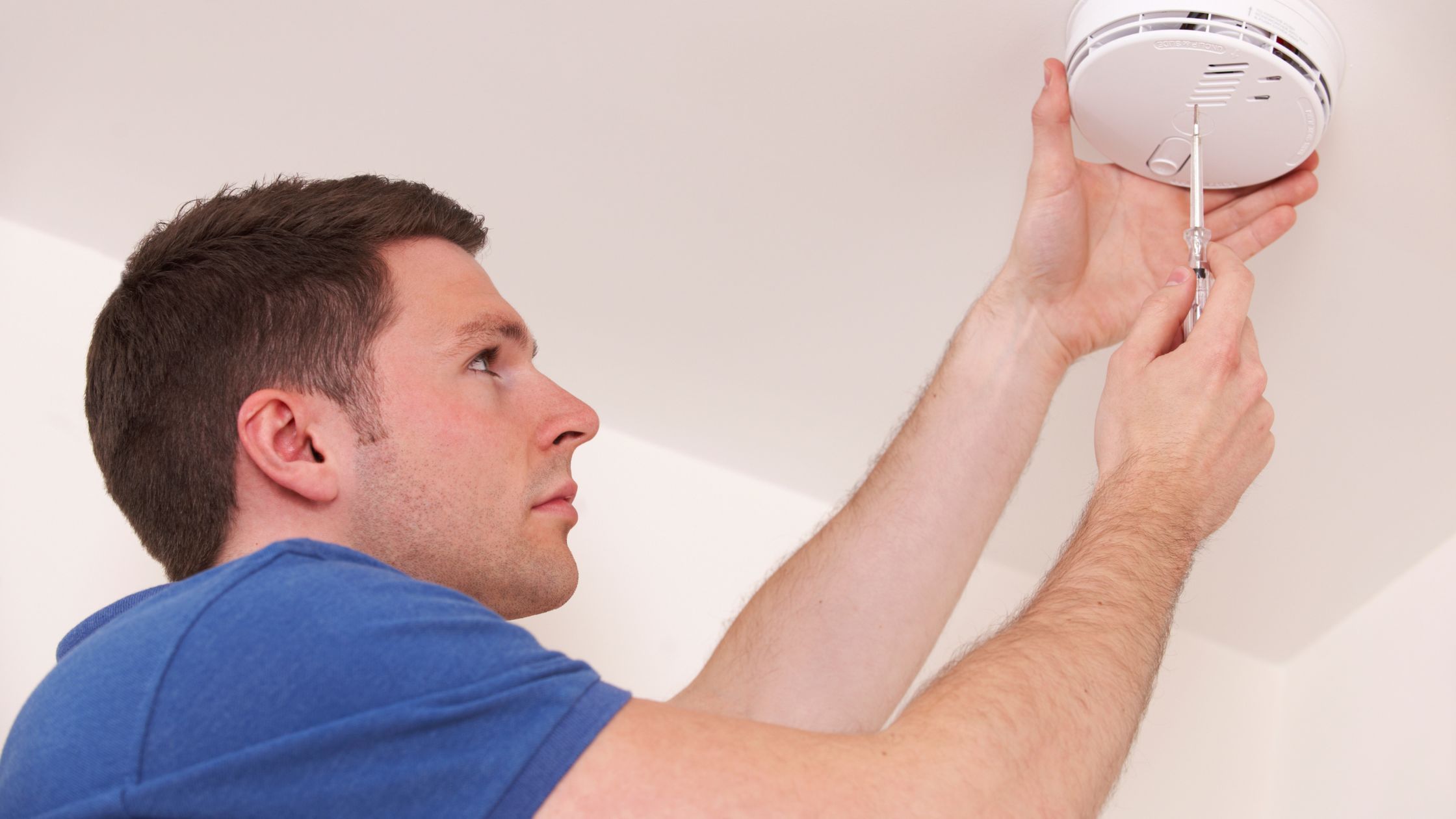
Why June Is a Good Month to Test Smoke and CO Detectors
June is an ideal month to test and replace batteries in your smoke and carbon monoxide detectors because it’s the start of summer — a time when HVAC systems, grilling, and closed windows all increase risk. A quick check now can prevent tragedy later.
Why June Is a Good Month to Test Smoke and CO Detectors
It’s easy to forget about smoke and carbon monoxide detectors when they’re quietly sitting on ceilings or tucked in hallways. But those little devices are some of the most important safety features in your entire home. And if you’re looking for a smart, seasonal routine to follow, June is a great time to make sure yours are working properly.
With warmer weather rolling in, most homeowners are focused on outdoor projects, AC tune-ups, and landscaping. But it’s exactly those seasonal changes — sealed windows, running air conditioning, firing up the grill — that make it especially important to check your smoke and CO detectors now.
Summer Brings Hidden Risks
June marks the beginning of summer, and that means some big shifts in how your home is used. Doors and windows stay shut to keep cool air inside. Grills and fire pits get more use. HVAC systems start running long hours. All of these changes increase the potential for fire or carbon monoxide buildup — especially in homes that aren’t properly ventilated.
Many people associate carbon monoxide risks with winter heating, but CO problems can happen year-round. Gas stoves, water heaters, and even attached garages can produce dangerous levels of CO if something fails or vents poorly.
Likewise, house fires are not just a winter concern. Summer sees spikes in kitchen fires, smoking-related fires, and incidents from faulty outdoor equipment. According to the National Fire Protection Association, grilling alone causes over 10,000 home fires every year — many of them in June, July, and August.
Why Now? Set It and Forget It
Testing your detectors doesn’t take much time, and doing it in June helps you build a simple, annual habit. Think of it like rotating your mattress or cleaning your gutters — once a year is better than never, and early summer is a natural reset point.
June also falls outside of the rush of holiday travel or winter weather disruptions. It’s a calm time of year when you’re more likely to be home and able to handle replacements or repairs without pressure.
What to Check
To make sure your detectors are working properly, start by locating all smoke and carbon monoxide detectors in your home. You should have at least one on every floor — including the basement — and one outside each sleeping area. If you have bedrooms with closed doors at night, it’s best to have one inside each of those rooms too.
Press the test button on each unit and listen for the loud alarm. If there’s no sound, or the sound is faint, replace the batteries or the unit itself if needed. Even hardwired detectors with battery backups need periodic checks.
For added peace of mind, consider replacing any unit older than 10 years. Smoke detectors have a limited lifespan, and many begin to lose sensitivity as they age. Most newer models have a manufacturing date printed on the back or inside the battery compartment.
Batteries and Upgrades
Even if your detectors seem to be working fine, June is a great time to swap out old batteries. A fresh battery ensures the unit will continue working through storm season and power outages, which tend to increase in summer.
If your detectors are more than a few years old, this is also a good time to consider upgrading to combination smoke and CO detectors, or interconnected systems that sound all alarms when one is triggered. Newer smart detectors can even send alerts to your phone if you’re away from home.
Tips for Long-Term Safety
Keep detectors free of dust and cobwebs, which can interfere with sensors. A quick vacuum or wipe-down in June helps ensure nothing is blocking their function.
Avoid placing detectors too close to bathrooms, open windows, or ceiling fans, which can cause false alarms or interfere with airflow. If you’ve recently remodeled or rearranged your home layout, double-check that detector placement still makes sense.
And always store a fire extinguisher in or near the kitchen. Detectors are a warning system — but it’s good to have a backup plan if a small fire ever breaks out.
When to Call for Help
If you’re unsure whether your detectors are working, if you’ve never installed carbon monoxide detectors, or if you want a professional to evaluate your setup, call in a licensed handyman or electrician. A quick inspection can ensure your home is up to code and fully protected.
Some municipalities, including parts of Northeast Ohio, require smoke and CO detectors in certain locations for point-of-sale inspections or rental properties. If you’re selling, renting, or buying a home, detector placement and functionality may be legally required.
FAQ: Smoke and CO Detector Questions
How often should I test my detectors?
Experts recommend testing them monthly, but checking them once every season — or at least every June — is a good starting point for most homeowners.
When should smoke detectors be replaced?
Every 10 years. Even if they still beep, older units may not detect smoke as effectively.
Do carbon monoxide detectors expire too?
Yes. Most CO detectors are only good for 5 to 7 years. Check the label for the manufacture date and replace as needed.
Can one detector cover both smoke and carbon monoxide?
Yes, many modern units offer both types of protection in a single device. Look for “combo” detectors when upgrading.
Where should detectors be installed?
At a minimum, place one on each level of the home and near sleeping areas. For best results, include one inside each bedroom and in high-risk areas like the kitchen or furnace room.




No Comments
Sorry, the comment form is closed at this time.